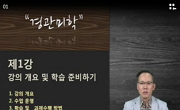- CONTENTS
- Ⅰ INTRODUCTION AND CONSTRAINTS
- Chapter 1 The Nature and Sources of Law = 3
- Law and Legal Process = 3
- Confluence of State and Federal Law = 4
다국어 입력
あ
ぁ
か
が
さ
ざ
た
だ
な
は
ば
ぱ
ま
や
ゃ
ら
わ
ゎ
ん
い
ぃ
き
ぎ
し
じ
ち
ぢ
に
ひ
び
ぴ
み
り
う
ぅ
く
ぐ
す
ず
つ
づ
っ
ぬ
ふ
ぶ
ぷ
む
ゆ
ゅ
る
え
ぇ
け
げ
せ
ぜ
て
で
ね
へ
べ
ぺ
め
れ
お
ぉ
こ
ご
そ
ぞ
と
ど
の
ほ
ぼ
ぽ
も
よ
ょ
ろ
を
ア
ァ
カ
サ
ザ
タ
ダ
ナ
ハ
バ
パ
マ
ヤ
ャ
ラ
ワ
ヮ
ン
イ
ィ
キ
ギ
シ
ジ
チ
ヂ
ニ
ヒ
ビ
ピ
ミ
リ
ウ
ゥ
ク
グ
ス
ズ
ツ
ヅ
ッ
ヌ
フ
ブ
プ
ム
ユ
ュ
ル
エ
ェ
ケ
ゲ
セ
ゼ
テ
デ
ヘ
ベ
ペ
メ
レ
オ
ォ
コ
ゴ
ソ
ゾ
ト
ド
ノ
ホ
ボ
ポ
モ
ヨ
ョ
ロ
ヲ
―
http://chineseinput.net/에서 pinyin(병음)방식으로 중국어를 변환할 수 있습니다.
변환된 중국어를 복사하여 사용하시면 됩니다.
예시)
- 中文 을 입력하시려면 zhongwen을 입력하시고 space를누르시면됩니다.
- 北京 을 입력하시려면 beijing을 입력하시고 space를 누르시면 됩니다.
А
Б
В
Г
Д
Е
Ё
Ж
З
И
Й
К
Л
М
Н
О
П
Р
С
Т
У
Ф
Х
Ц
Ч
Ш
Щ
Ъ
Ы
Ь
Э
Ю
Я
а
б
в
г
д
е
ё
ж
з
и
й
к
л
м
н
о
п
р
с
т
у
ф
х
ц
ч
ш
щ
ъ
ы
ь
э
ю
я
′
″
℃
Å
¢
£
¥
¤
℉
‰
$
%
F
₩
㎕
㎖
㎗
ℓ
㎘
㏄
㎣
㎤
㎥
㎦
㎙
㎚
㎛
㎜
㎝
㎞
㎟
㎠
㎡
㎢
㏊
㎍
㎎
㎏
㏏
㎈
㎉
㏈
㎧
㎨
㎰
㎱
㎲
㎳
㎴
㎵
㎶
㎷
㎸
㎹
㎀
㎁
㎂
㎃
㎄
㎺
㎻
㎽
㎾
㎿
㎐
㎑
㎒
㎓
㎔
Ω
㏀
㏁
㎊
㎋
㎌
㏖
㏅
㎭
㎮
㎯
㏛
㎩
㎪
㎫
㎬
㏝
㏐
㏓
㏃
㏉
㏜
㏆
https://www.riss.kr/link?id=M533710
- 저자
-
발행사항
New York : Van Nostrand Reinhold, c1993
-
발행연도
1993
-
작성언어
영어
- 주제어
-
DDC
346.7304/5347.30645
-
ISBN
0442235364
-
자료형태
일반단행본
-
발행국(도시)
New York(State)
-
서명/저자사항
The Legal landscape / Richard C. Smardon and James P. Karp ; with graphic assistance from Scott S. Shannon.
-
형태사항
xvi, 287 p. : ill. ; 29 cm.
-
일반주기명
"Guidelines for regulating environmental and aesthetic
Includes bibliographical references and indexes. - 소장기관
-
0
상세조회 -
0
다운로드
부가정보
목차 (Table of Contents)
- CONTENTS
- Ⅰ INTRODUCTION AND CONSTRAINTS
- Chapter 1 The Nature and Sources of Law = 3
- Law and Legal Process = 3
- Confluence of State and Federal Law = 4
- Classifications of Law = 4
- Civil versus Criminal = 4
- Procedural and Substantive Law = 4
- Legislative Process = 5
- Administrative Process = 5
- Judicial Process = 6
- Federal Courts = 6
- State Courts = 6
- References = 6
- Chapter 2 Managing the Community Landscape = 7
- Regulatory Standards = 7
- Context for Community Landscape Analysis = 8
- Community Planning Context = 9
- Community Landscape Decision-Making Framework = 10
- Plan of the Book = 12
- References = 13
- Chapter 3 The Evolution of Law and Aesthetics = 14
- Applicable Law = 14
- Powers Inherent in the Sovereign = 14
- Eminent Domain = 14
- Police Power = 14
- Constitution = 15
- Legislation = 15
- Common Law = 15
- Judicial History of Aesthetics-Based Regulation = 16
- The Birth and Infancy of Aesthetics in Land Use Regulation = 16
- The Supreme Court Decisions = 17
- State Court Decisions = 17
- State Constitutions = 17
- State Statutes = 18
- Local Ordinances = 19
- The Evolution in the Meaning of Aesthetics = 20
- Visual Beauty = 20
- Prevention of Harm = 21
- Shared Human Values = 22
- Environmental Harmony = 23
- References = 24
- Chapter 4 Current Status of Aesthetics, State by State = 25
- Alabama = 25
- Alaska = 25
- Arizona = 25
- Arkansas = 27
- California = 28
- Colorado = 28
- Connecticut = 28
- Delaware = 29
- District of Columbia = 29
- Florida = 29
- Georgia = 30
- Hawaii = 30
- Idaho = 30
- Illinois = 30
- Indiana = 31
- Iowa = 31
- Kansas = 31
- Kentucky = 32
- Louisiana = 32
- Maine = 32
- Maryland = 33
- Massachusetts = 33
- Michigan = 33
- Minnesota = 34
- Mississippi = 34
- Missouri = 34
- Montana = 35
- Nebraska = 35
- Nevada = 35
- New Hampshire = 35
- New Jersey = 35
- New Mexico = 36
- New York = 36
- North Carolina = 36
- North Dakota = 37
- Ohio = 37
- Oklahoma = 37
- Oregon = 38
- Pennsylvania = 38
- Rhode Island = 39
- South Carolina = 39
- South Dakota = 39
- Tennessee = 39
- Texas = 39
- Utah = 40
- Vermont = 40
- Virginia = 40
- Washington = 41
- West Virginia = 41
- Wisconsin = 41
- Wyoming = 41
- References = 42
- Ⅱ CONSTRAINTS APPLIED TO COMMUNITY ISSUES
- Chapter 5 Zoning and Land Use Control = 45
- Traditional Methods of Land Use Control = 45
- Common Law = 45
- Property Rights and Responsibilities = 45
- Planning Boards = 46
- The Police Power = 47
- From Police Power in General to Comprehensive Zoning = 48
- Comprehensive Zoning and Comprehensive Planning = 49
- Aesthetics, Zoning, and Land Use Control History = 50
- Early Period: Traditional Disregard = 50
- A New Trend Toward Valid Consideration = 50
- Aesthetics as "Auxiliary" Consideration = 51
- Aesthetics as Economic Well-Being = 51
- Aesthetics Within the Term "General Welfare" = 52
- Aesthetics (Alone) Warrants Exercise of the Police Power = 53
- Aesthetic or Scenic Inventories and Analysis = 54
- Citizen Preference Surveys = 54
- CASE STUDY: Dennis, Massachusetts, Visual Survey for Comprehensive Planning = 54
- Introduction = 54
- Procedure = 55
- Results = 55
- Conceptual Classification of Landscapes = 55
- Marsh and Wooded Landscapes = 56
- Beach and Water Landscapes = 56
- Suburban Development = 56
- Developed Open Land = 57
- Commercial and Municipal Landscapes = 57
- High-Density Residential Landscapes = 58
- Judgments of Scenic Value = 58
- The Scenic Value of Landscape Types = 59
- Summary and Implementation = 60
- References = 61
- Chapter 6 Architectural Regulation, Preservation, and Design Review = 63
- Introduction = 63
- Themes for Preservation = 65
- Preservation as "Inspiration" = 65
- Preservation for Architectural Merit = 66
- Preservation for Community = 66
- Application Contexts for Architectural Control = 67
- Legal Issues and Architectural Control = 69
- Design Review = 71
- Design Review in Historic Areas = 71
- Demolition, Alteration, and New Construction = 72
- Setting Review Standards 72
- Narrowing Broad Review Standards 73
- Standards Found in Background Documents = 74
- Procedural Safeguards = 74
- Administering Design Review = 74
- Design Review Beyond Historic Areas = 74
- Special Legal Issues for Nonhistoric Design Review = 75
- Developments = 75
- Implementing Design Review = 76
- CASE STUDY: Visual Architectural Review in San Francisco = 76
- Height and Bulk Controls = 76
- Height Controls 76
- Bulk Controls = 76
- Critical Analysis 76
- Landmarks Ordinance = 77
- Critical Analysis = 77
- Environmental Review = 77
- California Environmental Quality Act = 77
- Critical Analysis = 77
- Discretionary Review = 77
- Urban Design Plans = 78
- Informal Design Consultation 78
- Discretionary Review Power = 78
- Summary: 1967-1972 Plans and Processes = 78
- The Role of the U.C.-Berkeley Environmental Simulation Laboratory 78
- Skyline Views = 79
- Street-Level Views = 79
- The Downtown Plan of 1984-1985 = 79
- References = 79
- Chapter 7 Outdoor Advertising and Sign Control = 81
- Introduction = 81
- Early History of Sign Regulation = 81
- The Highway Beautification Act: The Federal Effort = 84
- The Legal Requirements of the Act = 84
- Cash Compensation to Sign Owners = 85
- Methods to Force Compliance with Local Laws = 85
- Commercial and Industrial Zones = 86
- Size and Spacing Standards = 86
- Tree Cutting = 87
- State Efforts and Billboard Control = 87
- Recent Trends in Local Sign Regulation = 87
- Constitutional and Other Legal Issues Involved with Sign Control = 88
- The First Amendment: Freedom of Speech = 88
- First Amendment Guidelines = 89
- Fifth Amendment Issues = 89
- Regulation of an Easement of View = 90
- Alternatives to Traditional Signage = 90
- Logos:"Specific Information Signs" = 91
- State-Designated Directional Signs = 91
- Sign Plazas = 91
- Tourist Information Centers = 92
- Local Sign Control Alternatives = 92
- CASE STUDY: Visual Analysis and Application: North Syracuse Signage Study = 92
- References = 96
- Chapter 8 Scenic View Protection = 97
- Introduction = 97
- History of View Protection = 97
- View Protection Mechanisms = 100
- Special Districts and Zoning = 100
- Architectural Review = 100
- Environmental Project Review = 101
- Scenic Easements = 101
- Scenic Byway Programs = 102
- Urban Entryways = 102
- View Protection: The Controversies = 103
- Legal Issues and View Protection = 103
- Scenic Easements and Eminent Domain = 105
- CASE STUDY: St. Lawrence River Scenic Access Study = 106
- Documenting Visual Occupancy = 106
- Determining View Quality = 107
- Results = 107
- Recommendations = 107
- References = 121
- Ⅲ FEDERAL AND STATE AESTHETIC REGULATION
- Chapter 9 Wilderness and Natural Area Preservation = 125
- Introduction = 125
- Wilderness and Natural Areas = 126
- Exclusiveness = 129
- The Purist's Controversy = 130
- The Compatibility Issue = 130
- Other Federal and State Programs = 132
- Wild and Scenic Rivers = 133
- Legal Issues = 136
- Scenic Trails = 137
- Legal Issues = 139
- State Legislation and Scenic Trails = 139
- Specific Land Areas = 140
- Bi-State and Regional Scenic Areas = 141
- CASE STUDY. Alpine Lakes Wilderness Appraisal = 143
- Introduction = 143
- Real Estate Valuation Methodology = 143
- The Valuation Process = 144
- Step 1: The Appraisal Process = 144
- Step 2: Preliminary Survey = 144
- Step 3: Data Program = 144
- Step 4: Alternative Use Determination = 145
- Step 5: Most Probable Use Determination = 145
- Step 6: Most Probable Buyer Determination = 145
- Step 7: Choice and Application of Appraisal Method = 145
- Choice of Appraisal Method = 145
- Establishing Comparative Wilderness Scores = 146
- The Wilderness Evaluation System (WES) = 147
- System Structure = 147
- Data Sources = 148
- Attribute Weighting = 148
- Significance and Results = 148
- References = 149
- Chapter 10 Regulation of Environmentally Sensitive Areas and Resources = 151
- Introduction = 151
- Sensitive Area Management and Regulation = 151
- Coastal Zone Management/Shoreline Regulation = 151
- Legal Decisions on Shoreland Protection = 155
- Wetland Regulation and Aesthetic Values = 155
- Federal Programs Affecting Wetlands = 156
- State Programs Affecting Wetlands = 158
- Local Regulation of Wetlands = 159
- Regulatory Approaches and Techniques = 160
- Critical Wetland Court Cases = 160
- Hillside Protection = 162
- Resource-Specific Legislation and Programs = 162
- Air Quality = 162
- Water Quality = 166
- Water Quantity = 168
- Archeological Resources = 171
- Wildlife Resources = 172
- Other Acts Protecting Aesthetic Rights = 173
- CASE STUDY: Assessment of Amenity Wetland Values in Juneau, Alaska = 173
- Juneau's Situation 173
- Methods = 173
- Visual Presentation = 175
- Results = 175
- Wetland Scenic Quality = 175
- Criteria Ratings = 178
- Comparison with Other Wetland Functions = 178
- Conclusions = 179
- References = 180
- Chapter 11 Aesthetic Project Review = 182
- Introduction = 182
- Project Review History: Development of Public Injury and Standing = 182
- Standing Rule Analyzed = 183
- Federal and State Statutes Guiding Aesthetic Project Review = 184
- Meeting Legal Issues-The National Environmental Policy Act = 186
- Legal Requirements: Section 4(f) Lands = 187
- Legal Issues: State and Mini-NEPA's and Project Review = 189
- Visual/Aesthetic Impact Assessment: The State-of-the-Art = 191
- Development of Visual Resource Management (VRM) Systems = 192
- VRM Methods for Landscape Planning = 194
- Scoping the Visual Impact Assessment = 195
- CEQ Regulations and Scoping = 195
- New York's State Environmental Quality Review Act: Visual Scoping Process = 196
- Detailed Visual Impact Assessment = 199
- CASE STUDY: Oregon Inlet Jetty Assessment = 201
- Background = 201
- Approach = 202
- Results = 206
- References = 207
- Chapter 12 Surface Mining = 209
- Introduction = 209
- Types of Surface Mining = 209
- Visual Impacts and Problems from Surface Mining = 211
- State Surface Mining Control Statutes = 212
- Federal Surface Mining Statutes and Programs = 214
- Legal and Constitutional Issues = 215
- Earlier Federal Acts = 216
- Wilderness and Mining = 218
- Mining and the National Environmental Policy Act = 220
- Specific Statutes for Specific Lands = 221
- CASE STUDY: Death Valley National Monument = 223
- Background and Context = 223
- Analysis and Study Approach = 224
- Results = 225
- References = 228
- Chapter 13 Timber Harvesting and Vegetation Protection = 230
- Timber Harvesting = 230
- Timber Harvesting Methods = 232
- Logging Systems = 232
- Development of Approaches for Forest Aesthetics = 233
- State Forest Practice Laws = 235
- Local Tree Protection Ordinances = 238
- Legal Challenges to Tree Ordinances = 239
- Trees on Public Property = 239
- Trees on Private Property = 240
- Landscaping Ordinances = 240
- CASE STUDY: Visual Project Analysis for the Allegheny National Forest = 241
- Procedure = 241
- Step 1: Inventory = 241
- Step 2: Sorting Questions = 241
- Step 3: Visual Absorption Capability = 242
- Step 4: Visual Quality Objective = 242
- Step 5: Landscape Management Guides = 242
- Conclusion = 243
- References = 243
- Chapter 14 Facility Siting = 245
- Introduction = 245
- Major Power Plant Litigation and Conflict = 245
- Siting Problems of Electric Power Plants = 247
- Federal Laws and Procedures for Facility Siting = 249
- State Regulation of Facility Siting and Corridors = 250
- Methodology Development for Facility Siting = 252
- CASE STUDY: Greene County Nuclear Power Plant = 252
- Introduction and Regulatory Context = 252
- Assessment Technique = 252
- Evaluation of the Extent of Scenic Quality = 253
- Scenic Features and Misfits = 253
- Model of Scenic Quality and Visibility = 253
- Modeling Result = 253
- Simulation of Plant and Plume = 253
- Visual Preference Survey = 253
- Historic and Cultural Context = 254
- Summary = 257
- References = 257
- Ⅳ Law and Aesthetics in Practice
- Chapter 15 Litigation and Aesthetic Analysis = 261
- Introduction = 261
- The Role(s) of the Expert Witness/Analyst = 261
- Typical Sequence of Events = 262
- CASE STUDY: Ice Age National Reserve, Wisconsin = 267
- Introduction and Background = 267
- Conditions of the Site = 268
- Procedure = 268
- Techniques Employed = 271
- Findings = 274
- Recommendations = 274
- Epilogue: Commission Ruling = 274
- References = 275
- Chapter 16 The Legal Landscape: Issues and Trends = 276
- Introduction = 276
- Review of Major Progressions and Trends = 276
- Will the Liberal Trends Continue? = 276
- Legal-Philosophical Dilemmas = 277
- Elitism versus the Common Man = 277
- Uniform Precedent versus Contextualism = 277
- Administrative Management Stability versus Shifting Public Value Systems = 277
- In Search of Contextual Harmony = 278
- References = 278
- Index = 279
- Author/Subject Index = 279
- Court Case/Law Index = 285
- About the Authors = 288














